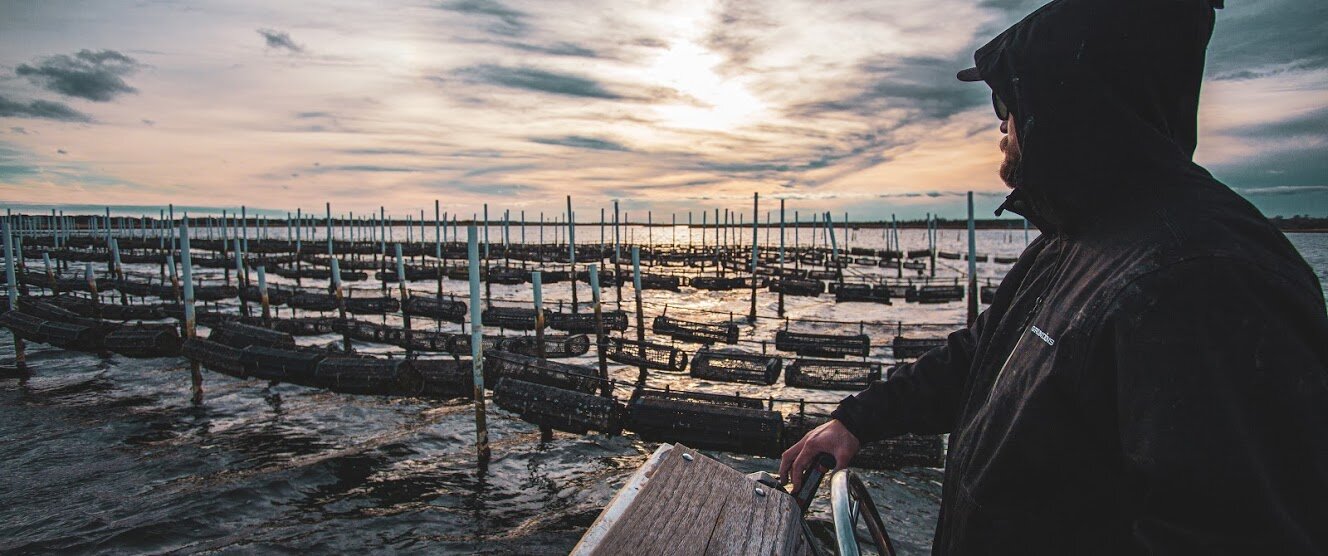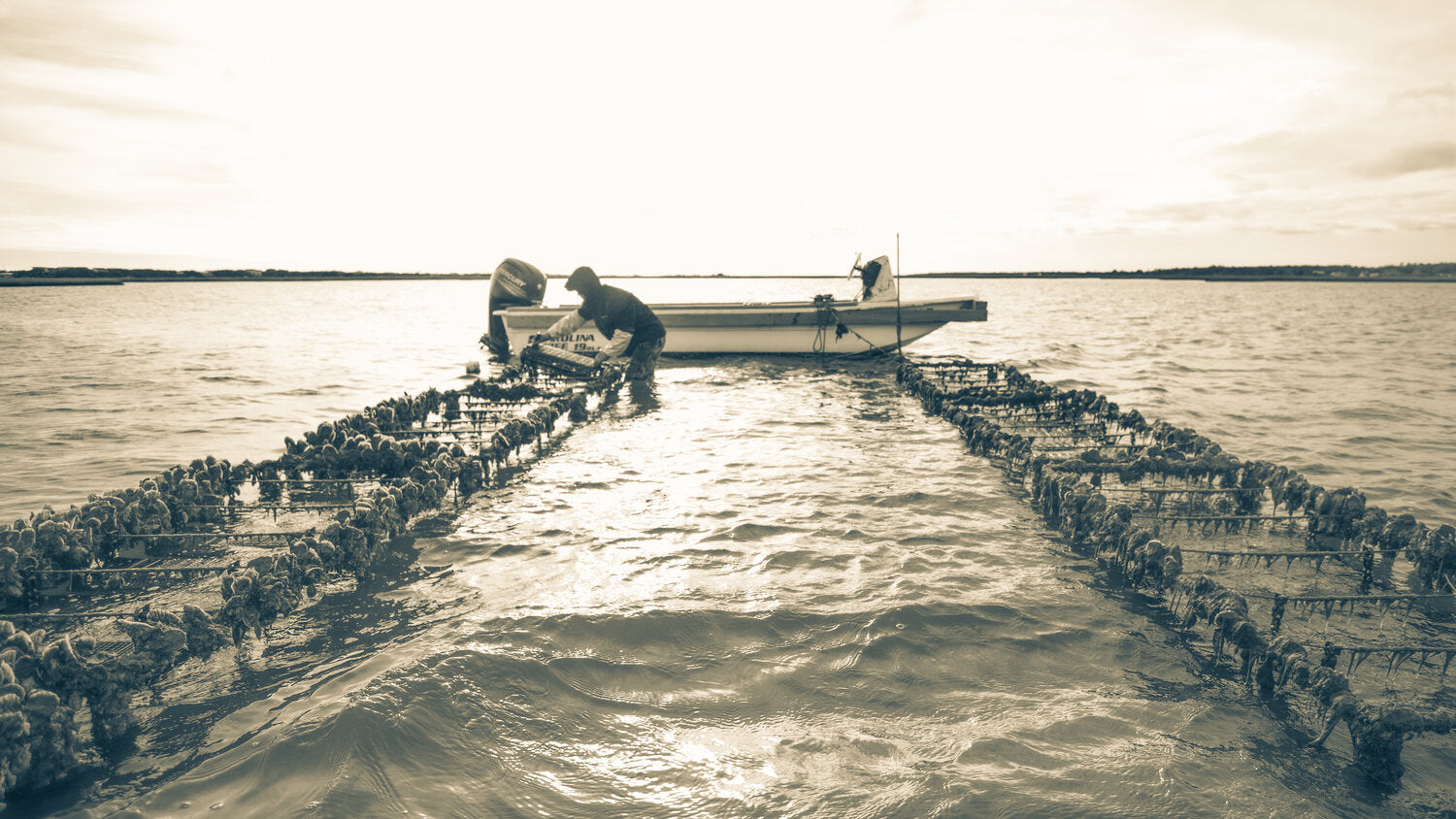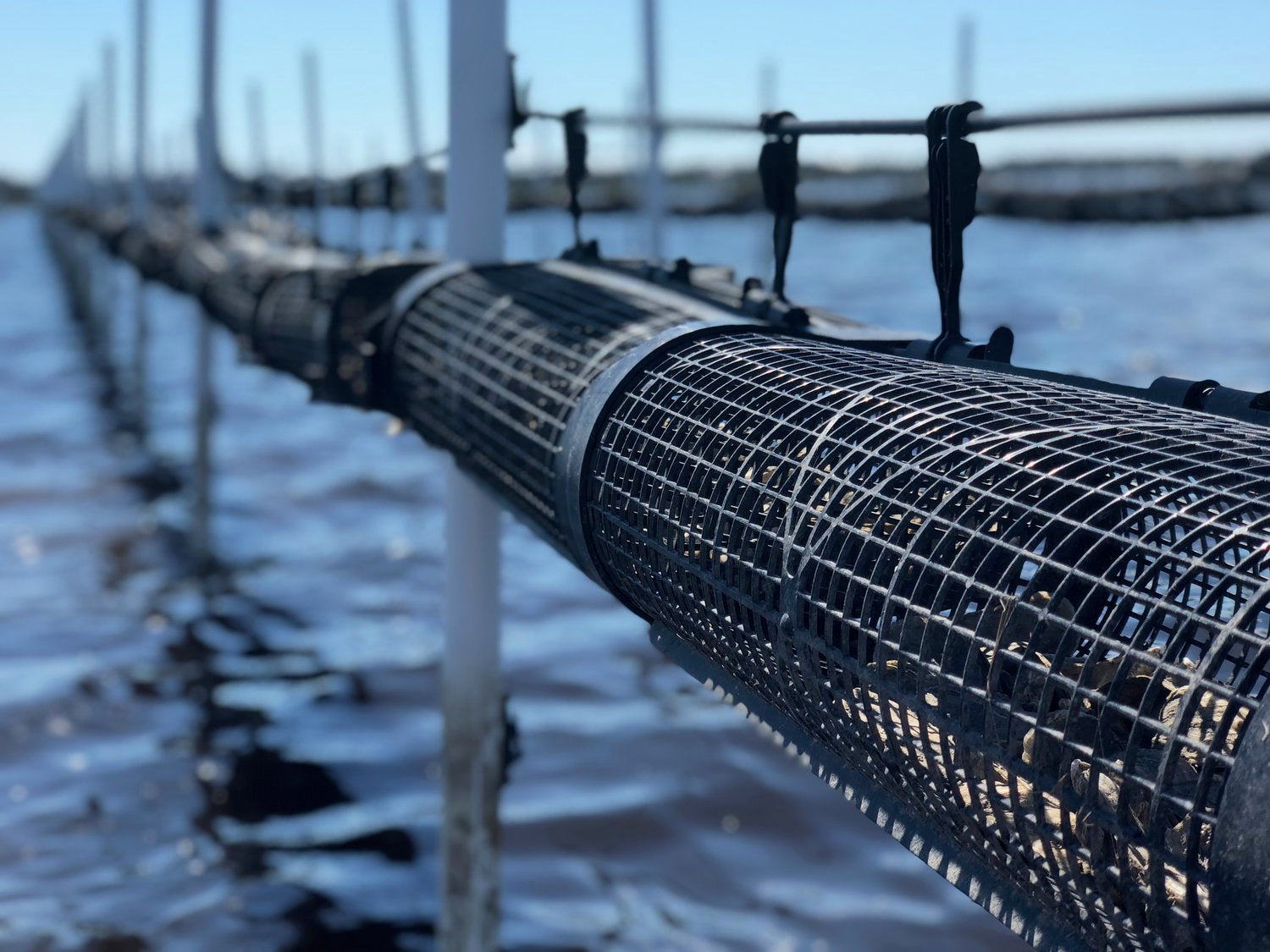The island’s blue-green nutrient rich waters wash over the farm and out the inlet with twice daily tides. Exchanging water with the ocean not but 5 miles from the farm maintains a high salinity yet healthy diet for the oysters. To the south of Topsail Sound resides Lea-Hautaff Island, an untouched and undeveloped barrier island kept safe for its crucial role in sea turtle nesting. The mainland side is dominated by the pristine Holly Shelter Game Land's healthy long leaf pine savannah.
Topsail Island (Pronounced Tops’l) is a long skinny barrier island that separates the Intracoastal Waterway from the Atlantic Ocean. It derives its name from the fashion in which famous pirates of the Golden Age, like Blackbeard, pillaged the ships passing by the island. Being expert sailors, the pirates would wait in the shallow areas of the sound behind the island, waiting for merchant ships to approach. As soon as the ships came within a certain distance, the pirates would hoist their sails and race out to the ships to plunder. Shipping sailors developed a technique in which they would look for the Top Sails of the pirate boats that were just barely visible from the other side of the island.
Cultivated utilizing a mixture of Australian and French oyster farming techniques. Grown primarily on a 300-foot suspended longline. These oysters endure a rigorous dry and tumble schedule. Facing extreme exposure to air to develop a thick clean shell and large adductor muscle. They are sorted and washed 8-12 times before reaching market size. Spending critical time in tide tumbling gear to be groomed perfectly by the pushing and pulling of the moon. Each oyster is sorted and packaged by hand. Then washed down and purged with the raw seawater they grow to ensure peak quality.
“North Carolina is poised to be the Napa Valley of Oysters”
— Rowan Jacobsen, author of A Geography of Oysters




